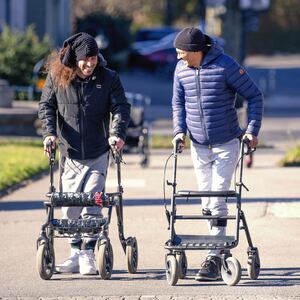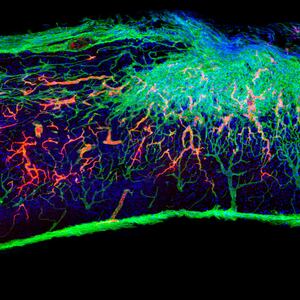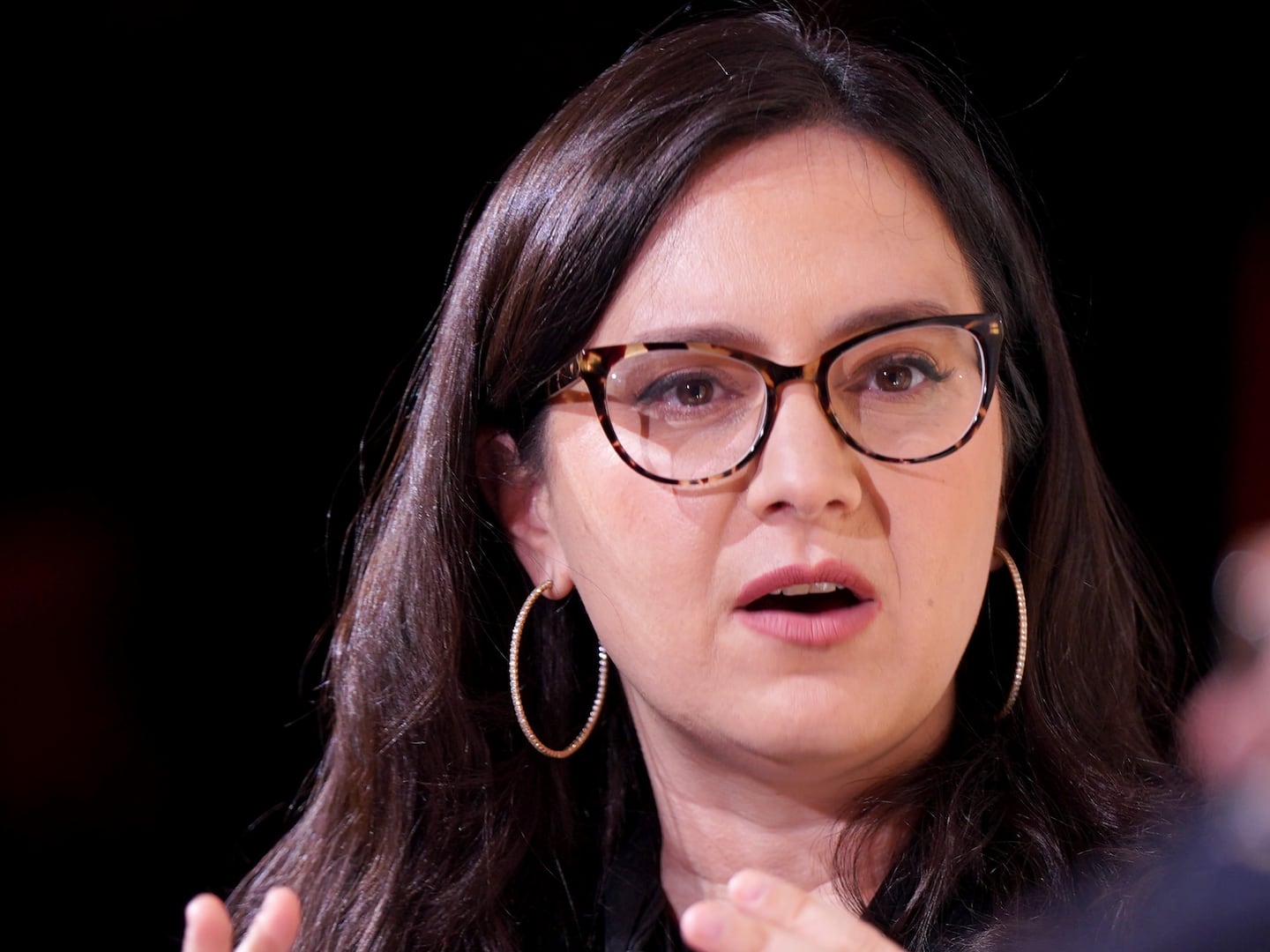In 2011, Gert-Yan Oskam woke up in a hospital in rural China to find that he couldn’t feel his legs. He was told that he was cycling on his way to the supermarket when he experienced a serious accident that injured his spinal cord, resulting in paralysis to his legs and some of his arms and torso. After being transported to a larger public hospital, he made arrangements to fly home to his native Netherlands where he believed doctors would be able to more effectively treat him.
Oskam was only 28 years old when he was hurt. He was looking forward to recovering and learning to walk again on getting on with big things in his life, like living in the three-story house he built overlooking a river.
“I thought, when I came back home, they would fix me,” Oskam, now 40-years-old, said at a press briefing on Tuesday. “But, unfortunately, there was nothing.”
In just a few months after the accident, it became clear that Oskam would have a much more daunting road ahead of him. Through rigorous physical therapy and exercise, he was eventually able to put on his own clothes and even participate in wheelchair sports. However, his mobility was still incredibly limited.
Then, Oksam was offered a chance to participate in the clinical trials for an experimental device called the Stimulation Movement Overground (STIMO) in 2017. Known as a brain-spinal interface (BSI), the STIMO provided electrical stimulation to his spinal cord and into the bones and muscles that control his lower body. The idea was to stimulate the nerves that weren’t severed from the accident.
From that seven-month clinical trial, he was able to move and even walk—albeit, very slowly—with the help of a crutch. He eventually plateaued though, which led him to enroll in an even more ambitious trail that would connect the STIMO with a device implanted in his brain.
Today, he’s able to walk further and more efficiently than he has ever before. The researchers behind the technology published a paper Wednesday in the journal Nature describing the BSI that Oskam uses to walk that helped restore communication between his brain and spinal cord, allowing him to stand and walk naturally. As an added bonus, Oskam was even able to walk with crutches even when the device was turned off—showing that it helped restore connections and movements after his injury.
The new technology holds a lot of promise and hope for the 5.3 million people in the U.S. who suffer from paralysis—and the millions more throughout the world.
“When there is a spinal cord injury, the brain is disconnected from the spinal cord so the communication is interrupted,” Gregoire Courtine, a neuroscientist at École Polytechnique Fédérale de Lausanne (EPFL) and co-author of the study, said at Tuesday’s press briefing. “What we’ve been able to do is re-establish the communication between the brain and the region of the spinal cord that controls leg movement with a digital bridge.”
Courtine added, “It captures the thoughts of Gert-Yan and translates these thoughts into a stimulation of the spinal cord to re-establish leg movement.”
The entire system consists of a few parts. First, there’s a device embedded in Oskam’s skull above the region of the brain that controls motor function. He then dons a headset that contains two powerful antennas, one of which decodes and translates his brain signals to help predict his motor intentions (e.g. walking, moving his leg up and down). The commands are then sent to the pulse generator epidurally inserted into his spine, zapping the nerves and allowing him to move his lower body.

The BSI helped restore communication between Oskam's brain and spinal cord, allowing him to stand and walk naturally.
Gilles WeberUsing this system, Oskam has been able to stand and walk through different terrains including smooth floors, gravel, and even staircases. He has since been able to use the device freely at home without supervision—albeit with the help of crutches along the way.
Astonishingly, the device also seems to work even when it is turned off. This suggests that it provides some level of recovery and rehabilitation to the damaged nerves of his spinal cord.
“A very unique type of neuron is activated by the stimulation and also a residual pathway from the brain,” Jocelyne Bloch, a neurosurgeon at Lausanne University Hospital and co-author of the paper, said to the press. “This coactivation triggers the growth of new nerve connections.”
Along with further refining this digital bridge to help restore the ability to walk, the study’s authors hope to develop a similar device that will be able to “decode the intention to move the arm and hand,” Henri Lorach, a neuroscientist at EPFL and co-author of the study, said in the briefing. He added that the team is launching a clinical trial with three participants to develop that device this year.
It’s not just those who suffer from spinal injuries who can benefit either. Courtine said that those with neurological disorders caused by stroke and other issues can potentially benefit from the BSI. The team hopes to “miniaturize” the system in order to make it even more non-invasive when embedding it into patients.
For Oskam, though, it means that he’s able to literally stand on his own two feet again—and even do something as simple as chores around the house that the rest of us take for granted.
“Last week, something needed to be painted and there was nobody to help me,” he recalled. “So I took my walker and painted it myself while standing. It helps a lot. Not only with painting, of course, but with my general health.”








